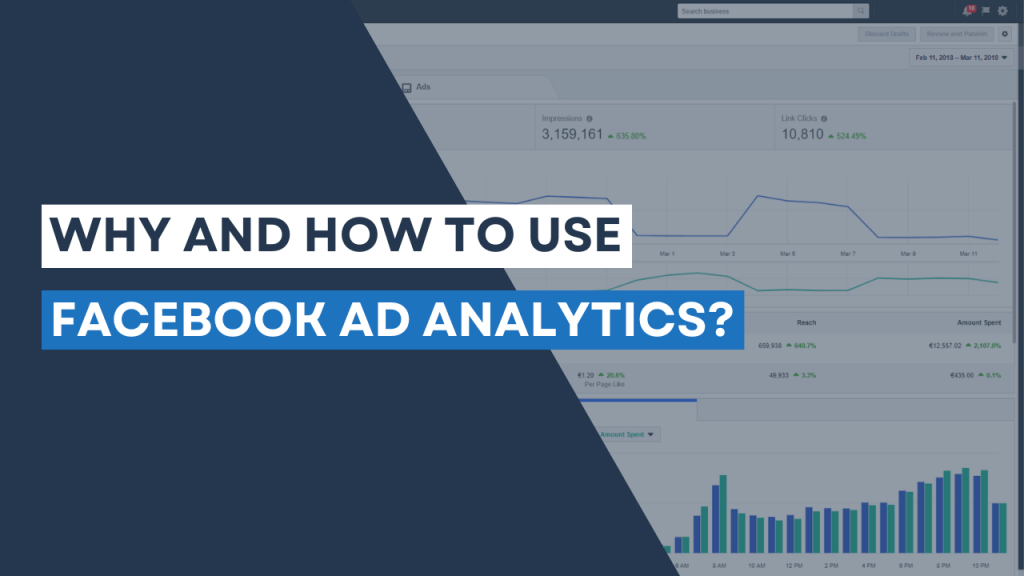Facebook Meta Ads, a powerful way for businesses to reach out to their target audience, depends not only on creating effective campaigns but also on many other aspects. Make the most out of Facebook Meta Ads Analytics to optimize your ad campaigns. This article will explore how to measure key metrics and leverage this data to optimize your campaigns for better performance.
Understanding Facebook Meta Ads Analytics
Before diving into optimization strategies, it’s crucial to understand the different metrics and analytics Facebook Meta Ads provides. These are your primary tools for assessing whether your campaigns are achieving their goals. Below are some of the most important metrics to pay attention to:
1. Impressions
Impressions represent the number of times your ad has been displayed on users’ screens. While this metric doesn’t indicate user engagement, it’s useful to track how often your ad is being shown. High impressions paired with low engagement might suggest that the ad itself needs to be improved.
2. Reach
Reach is the number of unique individuals who have seen your ad. While impressions can include multiple views by the same user, reach only counts each individual once. Tracking reach helps you understand how wide your ad’s exposure is, and whether your targeting is effectively reaching new users.
3. Click-Through Rate (CTR)
CTR shows the percentage of people who clicked on your ad compared to how many saw it. A higher CTR indicates that your ad is compelling and relevant to your audience. A low CTR might suggest that your ad copy, imagery, or targeting needs adjustment.
4. Cost per Click (CPC)
CPC tells you how much you’re paying on average for each click on your ad. This is a key metric for budget management. If your CPC is too high, it could indicate inefficiencies in targeting or bidding.
5. Conversion Rate
The conversion rate measures the percentage of people who completed a desired action after clicking on your ad, such as making a purchase or signing up for a newsletter. This metric is critical for evaluating the success of your ad in terms of actual business goals, not just traffic.
6. Cost per Conversion
Cost per conversion shows how much you’re paying for each successful action (like a purchase). This is a direct measure of your ad’s profitability. If the cost per conversion is too high, you may need to optimize your ad targeting or creative to lower this cost.
Optimizing Campaign Performance Based on Analytics
Now that you understand the key metrics, the next step is using the data to optimize your campaigns. Here are some strategies to consider:
1. Refining Audience Targeting
One of the most effective ways to optimize your Facebook Meta Ads is to improve your audience targeting. Facebook provides detailed targeting options, including demographics, interests, behaviors, and location. Use analytics to see if your ad is reaching the right people. If your reach and impressions are high but your CTR or conversion rates are low, it may be time to tweak your audience settings.
- Lookalike Audiences: If you’re running successful campaigns, create lookalike audiences based on people who have interacted with your business before. These audiences are likely to perform better than general interest-based groups.
- Retargeting: Retarget people who have already interacted with your business. If someone visited your site but didn’t complete a purchase, retarget them with ads that encourage them to finalize the transaction.
2. A/B Testing Your Ads
A/B testing, or split testing, is a great way to optimize your ads. By running two variations of an ad (with slight differences in copy, images, or targeting), you can see which one performs better. Use Facebook’s built-in A/B testing tools to evaluate:
- Ad Creative: Test different images, videos, and headlines to see which resonates best with your audience.
- Call to Action: Experiment with various calls to action to encourage clicks and conversions.
- Ad Placement: Test where your ads are displayed, such as Facebook News Feed, Instagram, Messenger, or Audience Network.
3. Optimizing for Conversions
Facebook Meta Ads allows you to optimize your campaigns for specific actions, such as purchases or form submissions. If you’re not already optimizing for conversions, consider switching from general engagement to a more specific goal.
- Conversion Tracking: Install Facebook Pixel on your website to track user actions after they click your ad. This will provide valuable insights into what is driving conversions and help you optimize for these actions.
- Bid Strategy: Adjust your bid strategy based on your campaign goals. If you’re focused on conversions, try using Facebook’s “Lowest Cost” bid strategy to automatically get the most conversions at the best price.
4. Improving Ad Quality
The quality of your ad plays a huge role in its success. Facebook has an ad relevance score that determines how engaging and relevant your ad is to your audience. A higher relevance score often results in lower costs and better performance.
- Engaging Content: Ensure your ads are visually appealing and provide clear, concise messaging. Make sure your call to action is visible and compelling.
- Ad Frequency: If your frequency (the number of times an individual sees your ad) is too high, it can lead to ad fatigue. Rotate your ads regularly to keep your audience engaged.
5. Analyzing Conversion Funnels
A common issue with underperforming campaigns is that the ad itself might be fine, but the conversion funnel (the steps users take from clicking the ad to completing the desired action) is broken. Look at your conversion funnel to identify any points where users are dropping off.
- Landing Page Optimization: If your ad is generating clicks but not conversions, check the landing page users are being directed to. Make sure it’s optimized for mobile, loads quickly, and has a clear call to action.
- Checkout Process: For e-commerce businesses, simplify the checkout process. If users are abandoning their carts, consider offering incentives like discounts or free shipping.
Conclusion
Facebook Meta Ads Analytics provides an abundance of data that can help you fine-tune your campaigns and improve performance. By regularly monitoring key metrics like CTR, conversion rate, and cost per conversion, and applying optimization strategies like A/B testing, refined audience targeting, and conversion tracking, you can maximize the return on your ad spend. The key is continuous testing and refinement. With the right strategies, you can master Facebook Meta Ads and drive meaningful results for your business.

